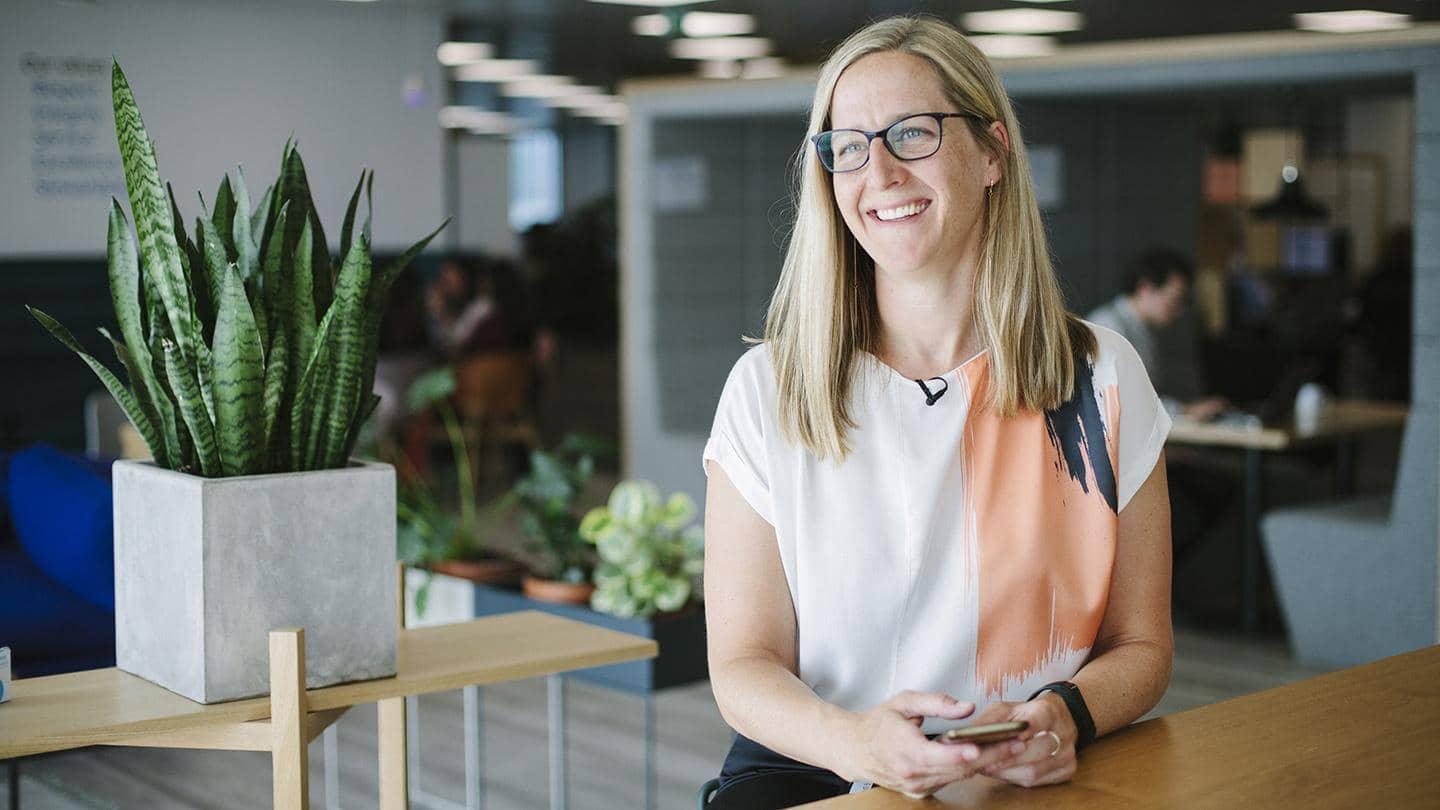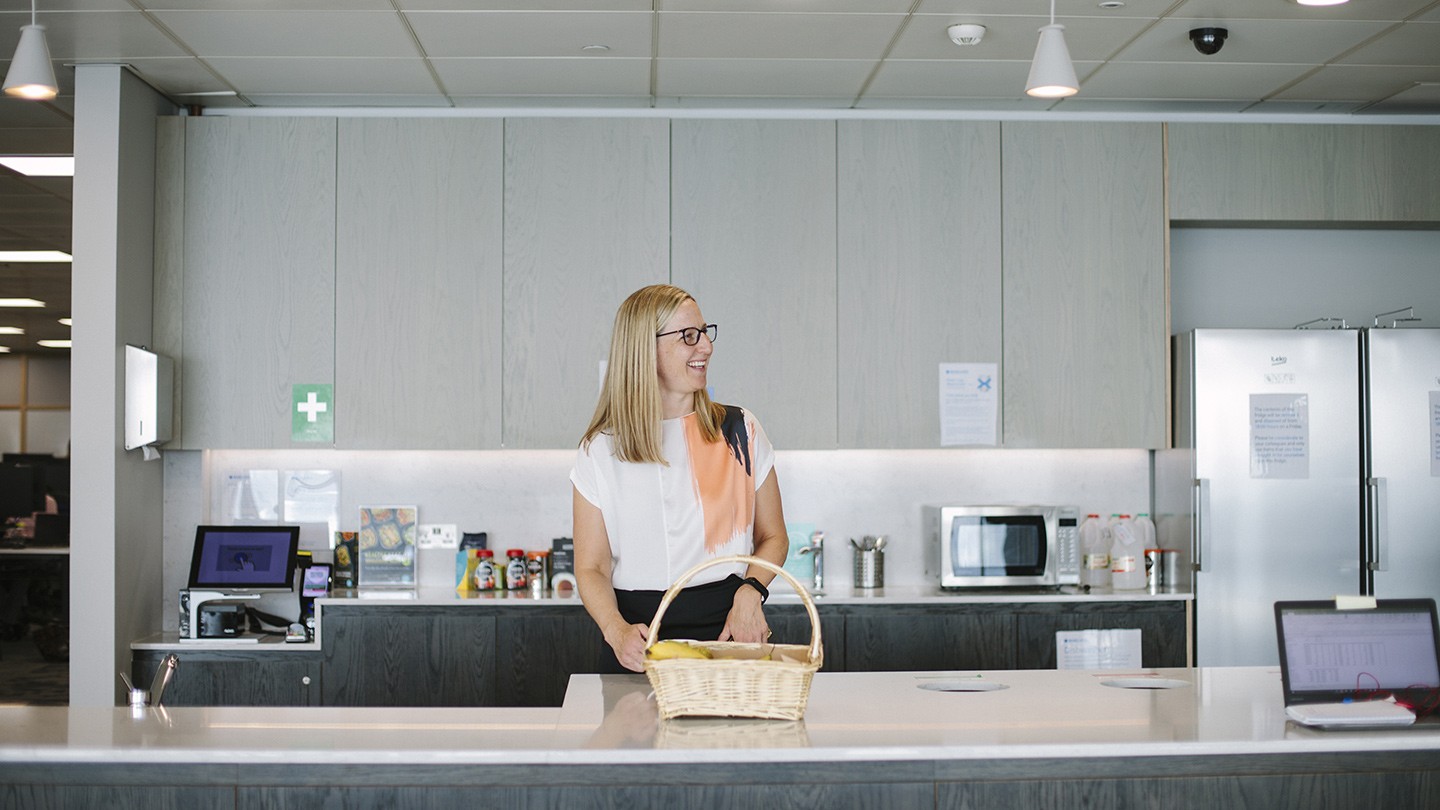
Community
Insights: Kathryn Townsend
From audio cash machines to contactless wristbands, Kathryn Townsend, Barclays UK’s Head of Customer and Client Accessibility, explains why the bank is committed to creating services that are easily accessible to all – and why there is “a huge commercial as well as moral imperative” to do so.
Almost one in five people in the UK have some form of disability. When you consider that, according to a survey (PDF 1.89MB), 75% of disabled people have left a shop or business because of poor disability awareness or understanding, it’s clear that more needs to be done to improve accessibility.
It’s not just the right thing to do, there is a huge commercial imperative too. Independent research commissioned by Barclays found that the collective spending power of disabled people and their families – known as the ‘purple pound’ – is over £265 billion per annum.
Making services accessible should not be seen as a charitable endeavour – what business doesn’t want to attract more custom, reduce complaints and improve customer experience? This is also not just about ramps and braille – thinking about accessibility should touch every part of a business, beyond just its buildings. Think websites, call centres, communications – potential customer barriers are everywhere.
We believe in this approach so much, we decided back in 2014 that we’d start to share our learning and experience beyond banking across different industries such as retail, tourism and leisure to help move the debate around accessibility forward.
Getting it wrong
Of course you want to get it right 100% of the time – and we do try – but as much as positive feedback is rewarding, negative feedback helps us make improvements. We seek to receive customer feedback from a variety of sources – from social media to complaints and customer surveys – and of course colleague feedback too.
We also make it our mission to include disabled colleagues and customers in user testing before we launch new services. By working with customers, we can not only get to the root of the issue quickly but also get their experience to help resolve issues and create new services.
For example, Barclays is the first UK bank to launch a new service for deaf customers who lip read and would like to use telephone banking. In practical terms, this means that telephone banking staff have to speak with someone who is not the customer, which is a potential security risk.

Historically we were unable to take calls from third parties who were not formally linked to the account. Thanks to the technology behind our new lip speaker service launched today, we can now complete security in a different way and accept a call from a lip speaker when they are with the customer. This service is a great example of one which came from working directly with a deaf customer who had fed back on previous challenges she’d faced.
Easy for all
Sometimes you need to make adjustments for specific needs, but the ideal approach is designing products that work for all. If you look at touch ID, facial recognition or voice recognition – these innovations can be fantastic enablers for people with impairments such as dyslexia, dyscalculia, memory difficulties or limited mobility. They weren’t necessarily developed as ‘disability solutions’, but inclusive design means that everyone benefits.
Improving accessibility is not just the right thing to do – there is a huge commercial imperative too
Barclays’ contactless payment wearables bPay is another example. From key fobs to wristbands, it’s a mainstream solution that allows people to make contactless payments without fumbling through a wallet looking for a card. Being able to pay with the swipe of a wrist makes shopping or tapping in on public transport easier for people who use guide dogs or white canes for example. But fundamentally, it’s a way of paying that’s easier for everyone.
Working with our clients
Barclays is currently working with Motionspot, an award-winning accessibility design company which specialises in creating spaces that are both beautifully designed but also deliver independence for anyone with a disability or in need of extra support.
Motionspot decided to bank with Barclays because of our approach to accessibility. We introduced the company to the manager of a branch of Budgens in north London – another client of ours – to see how they might think in new ways about accessibility in their store.
Their accessibility audit, which was undertaken as part of Barclays’ lead role in Purple Tuesday last month, looks at everything from the use of natural materials, which are often preferred by those with autism and may be more recognisable for those with dementia too, to ensuring flooring has a consistent tone throughout to make it easier for people with visual impairments.
Our goal is a shift in mind set. We have lots of anecdotal evidence of the commercial value of making products and services more accessible – we want to demonstrate it in practice. The perfect approach is one that produces innovations that make life easier, not just for those with physical impairments, but the whole of society.
Disabled people don’t want to be seen as different – the difference should come in how we approach inclusion, and that means taking more factors into consideration in the design process. A crucial part of this is feedback and understanding people’s needs. This isn’t just a moral imperative, but one that makes perfect business sense too.
Making services accessible should not be seen as a charitable endeavour – what business doesn’t want to attract more custom, reduce complaints and improve customer experience?
Five other ways Barclays is improving accessibility
Accessible cards: Barclays has already issued over 12,000 high visibility debit cards to customers. There are 12 different brightly coloured designs, meaning those with visual impairments or conditions such as Dyslexia can select a colour scheme that works for them. There is now a tactile notch on the card for easy orientation and the CVV security code on the back has been enlarged to make it easier to read.
Talking cash machines: All our standard cash machines have an audio function, allowing customers to check their balance, top up a mobile phone or order statements. Customers just need to plug headphones into the audio output socket and an audio guide talks them through the transaction. The cash machine panel includes Braille labels, as well as raised numbers on the keys and an easier to use funnelled entry point for the card.
An accessible app: The Barclays Mobile Banking app has been awarded the AbilityNet Accessibility accreditation. Users can invert screen colours on their device and it works with mobile voiceover technology. It also allows fingerprint access to avoid customers having to put in a passcode every time. Customers can also contact Barclays using the live instant-messaging service or direct call.
Face-to-face at a distance: The Barclays Video Banking app opens up the option of face-to-face discussions, which is great for people who might struggle to make it to a branch but still want or need to have a face to face conversation with us.
British Sign Language interpretation instantly: We offer deaf customers who use BSL two ways to get instant digital access to an interpreter, whether from home or in-branch, thanks to our SignVideo service.
Find out more about Barclays’ accessible services.